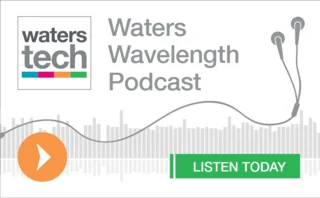
Banking group trials quantum computing for portfolio hedging and optimization
After experimenting with gate model quantum computers—as used by IBM and Google—CaixaBank gets to work on real-life problems.
Financial institutions are increasingly experimenting with quantum computing technology, paying most attention to the universal quantum computer—otherwise known as a gate model quantum computing system—that the likes of IBM and Google are known for.
While those projects have shown the advantages that this nascent tech could bring to finance, turning them into actual production applications is still years away. The technology, in theory, is perfect for complex, multivariate analysis, but today’s devices lack the scale to handle real-life datasets.
Quantum annealing, however—a quantum computing method for finding the optimal solution to problems with a large number of possible solutions—is starting to become commercially available, with California-based D-Wave Systems renting out time on their machines to developers.
VidaCaixa, the life insurance and pensions arm of Spanish banking group CaixaBank, has developed two proofs of concept using D-Wave’s Leap quantum cloud service and quantum hybrid solvers, which combine classical and quantum computing.
“We had been studying quantum annealing, and we understood that it had to be used specifically in optimization problems. But D-Wave seemed to have more commercial-ready technology, even if it was just for a specific set of questions. That’s when we started the PoC with VidaCaixa,” says Xavier Rebés, innovation director at CaixaBank.
D-Wave is building both annealing and gate model quantum computers, says Murray Thom, vice president of product management at D-Wave. Thom says this will help the company leverage strengths from both approaches and solve customers’ full quantum use cases.
“CaixaBank is seeing that they can build practical applications with quantum annealing right now. That’s why we’re doing both. We have a roadmap for the gate model systems, and a roadmap for the quantum annealing systems, and the quantum annealing systems are bringing people practical value in their applications immediately,” Thom says (see box: ‘Providing Clarity’).
CaixaBank’s two PoCs are for investment portfolio hedging and bond portfolio optimization. In the portfolio hedging use case, the PoC resulted in a 90% decrease in compute time compared with the traditional solution. Rebés says the team achieved this reduction on a real-size problem. For the investment selection and allocation use case, the PoC delivered an application that optimizes the internal return rate by 10% in a chosen portfolio of bonds.
Rebés says CaixaBank started testing the basic model with some necessary business constraints, such as not being able to extend the duration of the investment past a certain level.
“Obviously, as we have been adding more constraints, the results have become convergent with the original model, but the calculation time was optimized,” he says.
The next step for the bank involves identifying other potential hedging and optimization problems within the group to see if they can be solved using D-Wave’s solutions.
“We’re trying to understand whether we have more problems like this that could benefit from this technology, and see what’s the best approach for those—whether we have to go on to more PoCs, or whether we should have an extended service. That hasn’t been quite defined yet,” Rebés says.
The first step toward identifying potential use cases in the business is finding the quants that work on them. “As you can imagine, we are a large corporation, so it takes time to identify the right partner. Once we identify a potential problem, we must understand how the work is done right now, and create essentially a mapping to the existing model,” Rebés says.
Quantum exploration at scale
When working with clients, D-Wave’s Thom says it is important to focus on the specific challenges they face and then identify the ones that are most suited to the core capabilities of the technology. “Then it goes through a PoC phase, and the important part for any future step is trying to get as close to the application data as possible,” he says.
D-Wave currently has several 5,000-qubit quantum processors in the cloud, which it has integrated in hybrid solvers that combine quantum computing and classical computing, allowing it to work on full-scale problems, with up to one million variables or 100,000 constraints, depending on the problem.
“It will start processing on the full problem and pull out pieces to pass to the quantum computer to re-incorporate it in the solution. That’s really important in order to make sure you’re working with the actual application data, so you’re solving the real problem itself. At PoC phase, it’s usually to create a demonstration of business value where they can achieve, just like the one with CaixaBank, up to a 90% reduction in time to solution for their portfolio hedging calculations.”
From there, the client will move into a limited production stage that involves testing how the solution operates in their workflow. “From that phase, it’s expansion and scale-up into full production,” Thom says.
CaixaBank had an 18-person team of business and technical staff working on the deployment of the PoCs. Rebés says the process began with a quantum computing seminar for VidaCaixa in November 2021, after which the pensions arm identified the PoC use cases.
Santiago Murillo, innovation manager at CaixaBank Tech, says there are limits to the problems that quantum computing can solve in the analytics department at VidaCaixa, even with the technology’s promise of massive computing power.
Other companies had tested the portfolio optimization use case, though not with the complexities that CaixaBank added, Murillo says: “We also included the capital, the volume that we had to invest in the bonds.”
Murillo says that Caixa discovered an interesting use case for the technology, namely portfolio hedging calculations.
“It’s not a use case in public today. There have been some exercises done by JP Morgan in put options optimization, but not the hedging process,” he says.
D-Wave’s Thom says the CaixaBank team did the bulk of the work on the PoCs, with D-Wave providing tech support. The two teams arranged several Zoom meetings to discuss CaixaBank’s results, provide guidance, and help with any challenges they ran into while coding. The D-Wave team also assisted frequently by email in reviewing CaixaBank’s code and helping them to identify errors and areas of improvement to find better performance or results.
A quantum journey
CaixaBank started exploring quantum computing in late 2018, mapping potential use cases for the bank and for the industry at large.
It did its first PoC using IBM’s Framework Opensource Qiskit, which includes a simulator and a then-16-qubit quantum computer, to assess the financial risk of two mortgage and two bond portfolios. The experiment analyzed a quantum algorithm to estimate credit risk more efficiently than Monte Carlo simulations on a classical computer, and resulted in a whitepaper published with IBM.
“We understood that in that effort, the Monte Carlo simulation took less time—it was a more efficient calculation, and the results were convergent with the results using traditional computing. That was insightful for us because it was our first effort, but we couldn’t consider industrialization because it was a very downsized problem: you can imagine that CaixaBank has a lot more mortgages and bonds than in that PoC,” Rebés says.
CaixaBank saw the promise in the technology, however, so it began to diversify its efforts. The bank looked to accelerate its machine learning capabilities, partnering with Xanadu and its PennyLane quantum computer to develop a machine learning algorithm that classified 1,000 artificial customers according to their credit risk.
While there was a significant time reduction in that use case, CaixaBank found that it could not attain a more precise model than what it already had.
“After this second PoC, we realized that the size of the problems in both cases were significantly below what we would need on a production level. So we started thinking about whether there was something quantum adjacent, if not purely quantum, that was production ready,” Rebés says.
Before eventually turning to D-Wave, CaixaBank’s other experiments included looking at using photonics in quantum random number generator to create better scenarios for Monte Carlo simulations. While Rebés says this produced interesting results, it was still far from production ready.
CaixaBank continues to work with other quantum computing providers, such as IBM. “But we don’t have limitless resources, so we have to start somewhere and keep working through it and prioritize,” Rebés says.
Providing Clarity
D-Wave Systems has a three-year roadmap, called Clarity, that outlines its future. Murray Thom, vice president of product management at D-Wave, says the roadmap touches on providing annealing systems, a plan for gate model systems, and developing more powerful hybrid solvers that combine classical and quantum computing.
D-Wave is planning for the next-generation Advantage 2 quantum system, which will contain 7,000+ qubits, incorporating a new qubit design to enable 20-way connectivity.
The company also has an initiative to develop the industry’s first scalable and practical error-corrected gate model computing system, which will be carried out in five phases.
It will also expand the use cases for its hybrid solvers and build more cross-platform open-source developer tools.
“With the technology stack developed to the point where it is, most of the challenge for the application developers, the practitioners, is in formulating their problem and then finding the mathematical language to represent what is a word problem,” Thom says.
D-Wave is further developing its Ocean open source toolkit and its hybrid solvers to make that process easier for developers and enable them to represent their problems natively in the space they are working in, accelerating the time to adoption and time to demonstrate business value for their use cases.
“Right now, we’re giving them some tools that give them a lot of capabilities, but the direction we will be heading in is to enable them to do that in specific verticals, as each industry has its own specialized language,” Thom says.
While the technology has advanced, it still requires a specialized skillset, says Santiago Murillo, innovation manager at CaixaBank Tech. “Quantum technology is not quite at the mature point where a normal data scientist could use it in their pipeline. You need specific skills to deploy this kind of modeling. It’s quite complex to have the skills of understanding the business rules, and also understanding the mathematical knowledge that you need in order to code this problem in the new language,” Murillo says.
D-Wave has a good UX and it’s improving each day, he adds. “They deploy new features that make it easier to use. But from here to having a quantum package that solves financial optimization problems, I think it’ll take a few years. We are quite far from that.”
With additional reporting by Anthony Malakian.
Further reading
Only users who have a paid subscription or are part of a corporate subscription are able to print or copy content.
To access these options, along with all other subscription benefits, please contact info@waterstechnology.com or view our subscription options here: http://subscriptions.waterstechnology.com/subscribe
You are currently unable to print this content. Please contact info@waterstechnology.com to find out more.
You are currently unable to copy this content. Please contact info@waterstechnology.com to find out more.
Copyright Infopro Digital Limited. All rights reserved.
As outlined in our terms and conditions, https://www.infopro-digital.com/terms-and-conditions/subscriptions/ (point 2.4), printing is limited to a single copy.
If you would like to purchase additional rights please email info@waterstechnology.com
Copyright Infopro Digital Limited. All rights reserved.
You may share this content using our article tools. As outlined in our terms and conditions, https://www.infopro-digital.com/terms-and-conditions/subscriptions/ (clause 2.4), an Authorised User may only make one copy of the materials for their own personal use. You must also comply with the restrictions in clause 2.5.
If you would like to purchase additional rights please email info@waterstechnology.com
More on Emerging Technologies
This Week: Startup Skyfire launches payment network for AI agents; State Street; SteelEye and more
A summary of the latest financial technology news.
Waters Wavelength Podcast: Standard Chartered’s Brian O’Neill
Brian O’Neill from Standard Chartered joins the podcast to discuss cloud strategy, costs, and resiliency.
SS&C builds data mesh to unite acquired platforms
The vendor is using GenAI and APIs as part of the ongoing project.
Chevron’s absence leaves questions for elusive AI regulation in US
The US Supreme Court’s decision to overturn the Chevron deference presents unique considerations for potential AI rules.
Reading the bones: Citi, BNY, Morgan Stanley invest in AI, alt data, & private markets
Investment arms at large US banks are taken with emerging technologies such as generative AI, alternative and unstructured data, and private markets as they look to partner with, acquire, and invest in leading startups.
Startup helps buy-side firms retain ‘control’ over analytics
ExeQution Analytics provides a structured and flexible analytics framework based on the q programming language that can be integrated with kdb+ platforms.
The IMD Wrap: With Bloomberg’s headset app, you’ll never look at data the same way again
Max recently wrote about new developments being added to Bloomberg Pro for Vision. Today he gives a more personal perspective on the new technology.
LSEG unveils Workspace Teams, other products of Microsoft deal
The exchange revealed new developments in the ongoing Workspace/Teams collaboration as it works with Big Tech to improve trader workflows.








